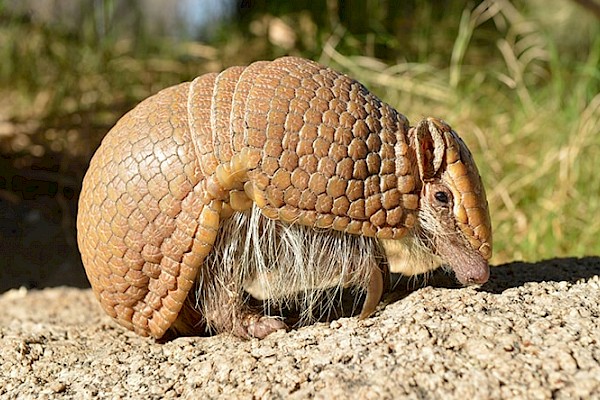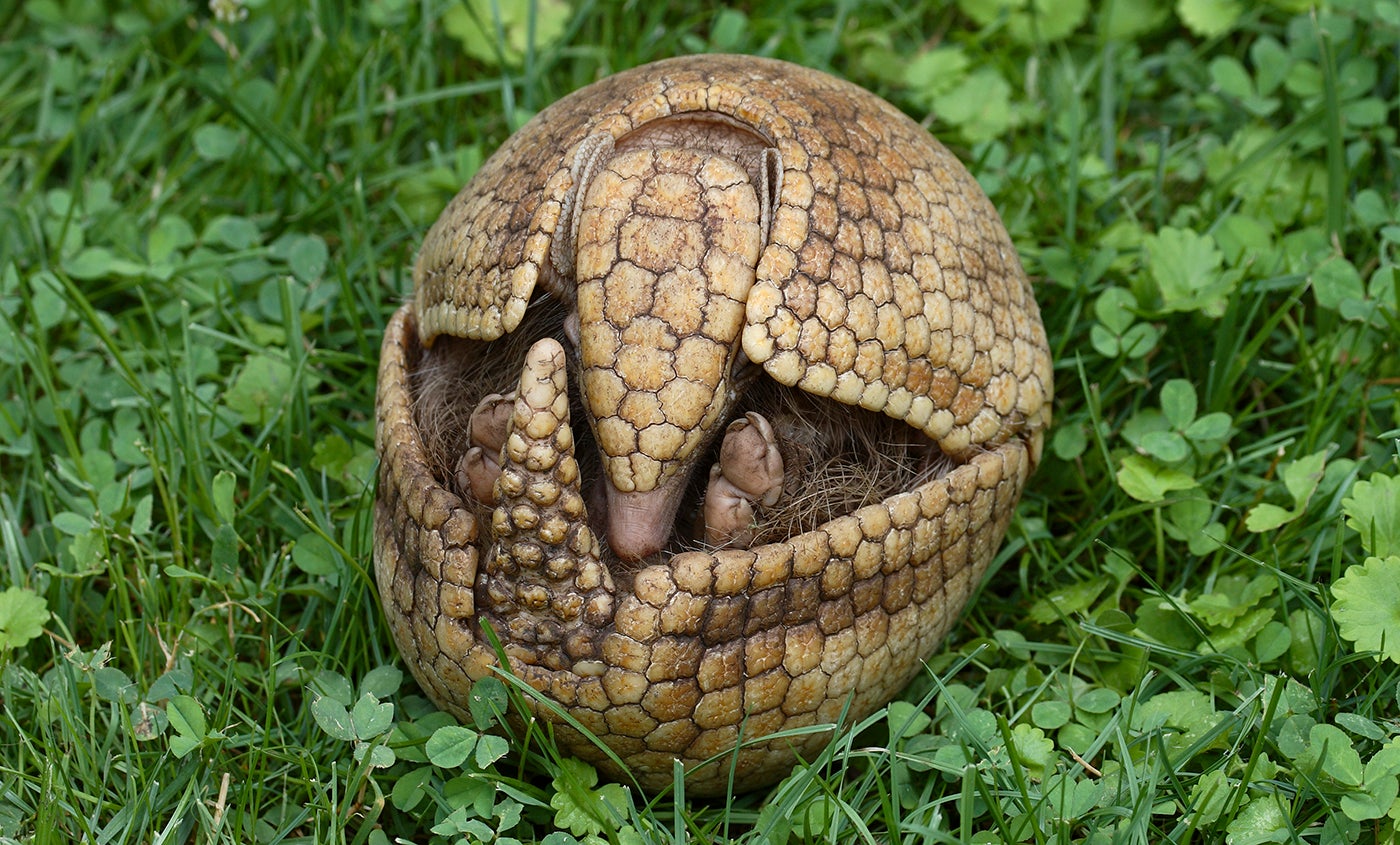
Life history traits (averages) Female sexual maturity 320 days Male sexual maturity 320 days Gestation 120 days Weaning 55 days Litter size 1 (viviparous) Litters per year 1 Inter-litter interval Weight at birth 80 g Weight at weaning Adult weight 1,500 g Postnatal growth rate 0.0362 days -1 (from Gompertz function) Maximum longevity residual 246% Metabolism Typical body temperature 306ºK or 33.0✬ or 91.4✯ Basal metabolic rate 1.1720 W Body mass 1160.0 g Metabolic rate per body mass 0. One female specimen acquired in 1971 by Lincoln Park Zoo, and estimated to be 3 years of age, passed away in 2005 at an estimated 36.8 years of age (John Gramieri, pers. Three-banded Armadillos are the only species of. Sample size Small Data quality Acceptable Observations The Brazilian Three-banded Armadillo (Tolypeutes tricinctus) lives in the tropical forests of Brazil. In fact, only the three-banded armadillo can, curling its head. They do not dig burrows of their own but. Species Tolypeutes matacus Common name Southern three-banded armadillo Lifespan, ageing, and relevant traits Maximum longevity 36.8 years (captivity) Source John Gramieri, pers. Find the perfect Brazilian three banded armadillos stock photo, image, vector, illustration or 360 image. Contrary to popular belief, not all armadillos are able to encase themselves in their shells. Three banded armadillos or Tolypeutes matacus are usually solitary but occasionally group together during cold weather. We support the Giant Armadillo Conservation Project, the first long term ecological study of giant armadillos in the Pantanal wetland.įind out more about the Giant Armadillo Conservation Project.AnAge entry for Tolypeutes matacus Classification (HAGRID: 02080) Taxonomy Kingdom: Animalia Little was known about the giant armadillo until Dr Arnaud Desbiez began his pioneering research into the species in 2011. There are around 20 species of armadillo, many of which are vulnerable. Our armadillos are part of the European Endangered Species Programme (EEP). While populations are in decline, they are found in a number of protected areas, which provide a refuge from the habitat destruction. They face a number of threats in the wild, including habitat loss thanks to expanding agricultural developments. Since they do not dig a burrow and will roll into a ball when threatened, southern three-banded armadillos are easier to hunt than other species.


Rodar and Rio were both born in Poland in 2013 and arrived in Edinburgh in 2014, while Danilo was born in 2016 and arrived in 2017.

There are five southern three-banded armadillos here at Edinburgh Zoo - Rodar, Rio, Danilo, Inti and Pacha.


 0 kommentar(er)
0 kommentar(er)
